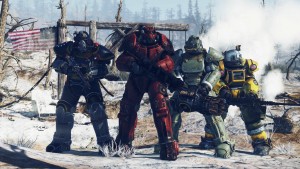The distinction between “remaster” and “remake” has been getting blurrier over the years. We are, without a doubt, in a time where both are becoming common in game development. As we’ve seen with modern releases like Resident Evil 2 and Final Fantasy 7, remakes have quite a bit of leeway with what can be changed from the source material. Remasters, however, have much more scrutinized but often rarely defined limitations to what can be changed before they’ve changed too much. But how far should they go?
Some remasters change so little of the original game that it’s hard to even understand why they were released. Red Faction Guerrilla Re-Mars-tered (ignore the horrible name) was a game that followed this design. The new version of the game supported some more graphical options and higher resolutions, but the changes ended there. Even with the improvements to lighting and textures, it was hard to tell the difference between them without having them side by side. However, this remaster was free for anyone who owned the original, so few had any issue with its limited scope.
On the opposite end of the spectrum, Homeworld’s Remaster made some much more notable changes from the original. While it did produce a spectacular improvement to the graphics, changes to the first game included a total revamp of the UI. They also removed the fuel system from fighters and changed some unit balancing.
They even went so far as to tweak a few mission designs so that they would play better or be more in line with balance changes. For me, these changes were all improvements, but for some, they believed it betrayed the original design of the game. Thankfully, they did include the original games in their entirety with the purchase of the remastered version.
Recently Command & Conquer released their remaster and fans of the series seem quite satisfied with the result. The developers, despite being under the helm of Electronic Arts, worked closely with the C&C community to establish what needed to be changed and what didn’t. The changes to the textures and graphics are certainly the most obvious, but the process is so authentic to the originals that they are unmistakable. It’s almost as if they channeled how people perceived them 25 years ago and made them look that way.
The other changes made included improvements to the dated UI and some control methods – but some of these you can still trigger on and off in the options menu. In fact, the entire graphical upgrade can be turned on and off with the space bar. It’s needlessly convenient, but fascinating to do. Sadly, though, many quirks of the original remain like the often-frustrating unit pathing that sends them all over the place when trying to get through narrow passages or around obstacles.
As we continue into a future where developers take on more and more games of the past to be remastered and remade, the quality won’t be consistent. We have seen disasters like Warcraft III Reforged and can anticipate the success of games like Destroy All Humans, but there are no guarantees. It may not always be possible to please fans of the originals as well as newcomers with a single remake or remaster. Sometimes developers must make a choice and the result can determine whether players embrace the game or hate it.




